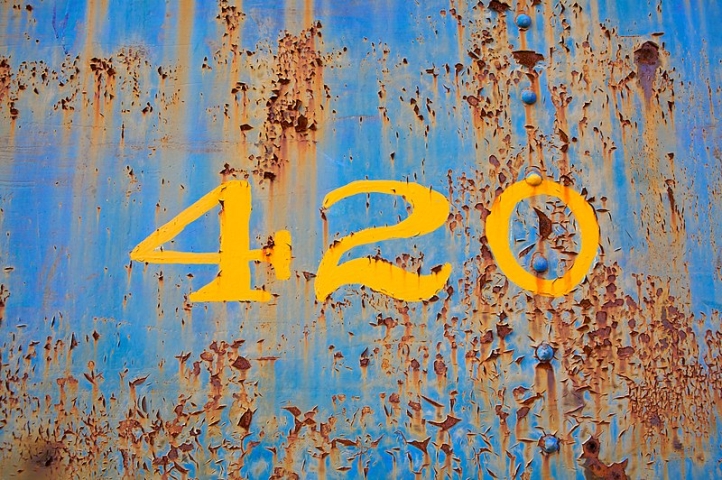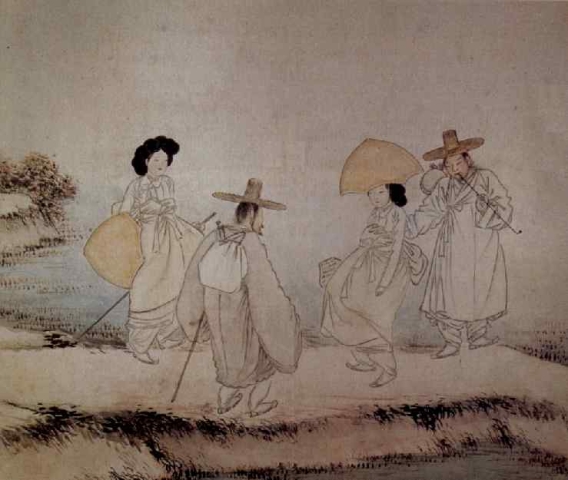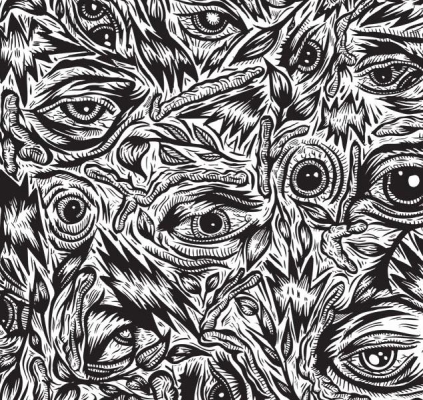Lessons from guarana and the Sateré-Mawé
The guarana myth
Before things were as they now are, there were three siblings: Ocumáató, Icuamã and Onhiámuáçabê (sometimes referred to as Oniawasap’i). Oniawasap’i, who was beloved by all plants and animals and who held the knowledge of the forest, was in charge of the Nusoken, a sacred land in which she had planted a chestnut tree.
Oniawasap’i had never had a husband, nevertheless, many animals in the forest wanted to live with her. One day, a little snake, determined to get to Oniawasap’i, sprayed some perfume on the path in which Oniawasap’i would always walk by. Oniawasap’i was very pleased with the perfume and as she complemented the scent, the little snake (Moikyt) bumped into Oniawasap’i’s ankle and just like that Oniawasap’i got pregnant.
When Oniawasap’i’s siblings found out about the pregnancy they were very angry and upset and as a punishment they expelled her from their house and the Nusoken land where Oniawasap’i had planted the chestnut tree. Oniawasap’i went to live in a house by herself and with time and the help of three other beings: the mucura (skunk), the duck and saracura (slaty-breasted wood rail), she gave birth to her child, who she then called Moikyt.
The child’s uncles (Ocumáató and Icuamã), came to visit them a couple of times but despite being friendly to them when around them, they would always curse the child behind their back. As the child grew older, however, he grew more and more fond of the eating habits of his uncles and kept insinuating he also wanted to eat chestnuts from the tree his mum, Oniawasap’i, had planted.
At first, Oniawasap’i told the child that they could not eat the chestnut because the uncles had forbidden them from visiting the Nusoken sacred land. As the child kept insisting, however, the mum gave in and both of them sneaked into the land to eat from the tree. After some time, the uncles found out about what they had been doing and killed the child.
When Oniawasap’i found out about her child’s death she was enraged and walked all the way to her sibling’s house intending to kill them. When she arrived, however, the siblings took away the arrow she had brought to kill them and instead gave her a cotton spindle saying that was all she was going to need from then on. As this happened, Oniawasap’i suddenly changed and turning towards her son, she began to tell him all the good things that would come to him from then forth and all the good things that the boy would bring to earth. As she did this, she plucked the left eye from the child and planted it. From the left eye grew the false guarana. She then plucked the right eye and did the same thing. From the right eye grew the true guarana, from which all good came.
Guarana as a new social contract
For the Sateré-Mawé, guarana is the symbol of a sudden change in their culture, which went from a society that was submerged in revenge, separatism and wars to a society in which sharing, meeting and argumentative governance were at the core. For the Sateré-Mawé, guarana is a symbol of a new societal organization and also an entity which voices and reinforces their ethnicity and identity to the outside world.
From the many representations the Sateré-Mawé use to explain what guarana truly means, the best one is the metaphor of the ‘true tuxaua’ (tuisa ‘horo). The ‘true tuxaua’ is the one who with good advice and words of understanding (sehay wakuat) opens a future of long life for the descendants. The ‘true tuxaua’ is the one who knows to recognise the place (belonging) and role (competence) of each and every individual within the collective and the one who, before making any decision, always listens to all members within the community and all leaders from neighbouring communities.
To have the opportunity to listen to everyone, the tuisa ‘horo summons a meeting or general assembly in which all who wish to be listened may do so via the sharing of a guarana beverage (capô). During these meetings, guarana plays the role of collecting the voice of everyone involved and making these voices a single voice (we’entupehay’yn): the voice of the one who summoned the meeting. The expectation is that the single voice that comes out of the meeting unifies in a conciliatory manner the thoughts of everyone present. Through a horizontal sharing of words facilitated by the capô, the tuxaua can learn about the issues within the community and form the necessary advice.
The rise, fall and rise again of the Sateré-Mawé
The Sateré-Mawé have been making use of the guarana plant since immemorial times. The first European mention of the plant comes from a priest called João Felipe Betendorf who in 1669 made a note in which he mentions guarana as the gold of the Sateré-Mawé. Since a very long time, prior to the European invasion, guarana had been commercialized and exchanged between different communities in the south of the American continent. By the time the Europeans arrived, guarana was already known not only to the Sateré-Mawé but also to many other communities from regions that nowadays comprise Brazil and parts of Bolivia, Argentina, Paraguay, Peru, Colombia and Venezuela. According to some, in Venezuela there was a different type of guarana that grew in the Orinoco region and the Rio Negro, which was also consumed by a different community called Baré.
Despite the wide-spread consumption of the guarana plant, however, the cultivation and transformation of guarana remained for a very long time monopoly of the Sateré-Mawé. It was only during the 19th century that the monopoly suffered a decline due to the rubber industry, which took a considerable number of Maués (those from Sateré-Mawé) out of the guarana industry and into the rubber one. During the 20th century, again, the role of the Sateré-Mawé in the cultivation of guarana was further eclipsed by external agencies who now started to take over the cultivation of the guarana with the goal of using the plant to make the nowadays so popular guarana soda. As these external agencies took over the cultivation of the guarana plant, they not only excluded the Sateré-Mawé from the process as also fully ignored their knowledge regarding the plant and the culture associated with it.
It was only during the 1980s that the Sateré-Mawé began to recover from the years of exploitation. Having guarana at the core of their resistance movement, the Sateré-Mawé began focusing on recovering their economic autonomy, lost during the 19th and 20th century. Guarana played an immense role in the creation of their political organization called ‘Conselho Geral da Tribo Sateré-Mawé’ (CGTSM), set to fight back the forces going against the community. It also played a key role during disputes for funding for community projects and production and commercialization of guarana in a sustainable way by the Sateré-Mawé community.
During the 1990s, the Sateré-Mawé finally managed to begin a project of commercialization of guarana (Waraná) following their own ethical, ecological, social and cultural parameters. In 2008, they had articulated the Consórcio dos Produtores Sateré-Mawé (CPSM), comprising 500 Sateré-Mawé families that were producing guarana in over 70 different Sateré-Mawé villages. Nowadays, the Sateré-Mawé have deals with organizations in different European countries and have finally managed to recover their economic, social and cultural autonomy all following the ideals of the guarana: through listening and horizontal discussion.
Guarana put in context
When accessing their page, the Sateré-Mawé make a clear statement: ‘Our culture is not heritage. Our culture is power’. Through guarana, the Sateré-Mawé have slowly managed to regain the power over their own culture. By claiming their knowledge on the plant and by affirming their identity in relation to the plant, the Sateré-Mawé have done what to most communities is a very difficult task: they managed to create their own space within the structures of the so called ‘western’ world not by conforming to it, but by demonstrating the importance of their own knowledge within that structure.
Through the commercialization of guarana, on their own terms, the Sateré-Mawé have also managed to create a space where other spheres of their community grow. From fighting for the right to their land, to showcasing the importance of their culture, guarana has allowed the community to establish itself outside of its nearer circle, at a national and international level.
On their website nowadays, it is possible to see their growth both in terms of the partnerships being formed as the type of content being produced: from academic anthropological work being done on the community, to radio shows broadcasted to the local region, to YouTube channels showcasing their day to day work to the first steps towards the creation of their own Sateré-Mawé Indigenous University, a university where all the knowledge about the communities history, culture and politics can be passed on.
Lessons from guarana
During times of crisis like the ones we live in now, the strength and organizational skills of the Sateré-Mawé stand as an example of what can be done to survive. Within the Brazilian context, in which indigenous lives are constantly under threat, the Sateré-Mawé show that there might still be some hope, that it might still be possible to strive. In a world where listening and sharing seem to be on decline, the Sateré-Mawé, following the teaching of the guarana, show us that it is possible to organize in a different way and that it is possible to grow without stepping over others. Next time we make use of guarana, maybe we should pay more attention to what it has to say and, who knows, maybe one day we can also learn from the Sateré-Mawé and re-consider Western takes on war, inequality and colonisation.
Did you enjoy reading this article and do you like to write yourself? We are always looking for people who share our passion for natural products, who can also translate this into great texts. And we have an interesting reward for this. View all information for writers.
 Blog Cannabis
Celebrate 420 with Sirius and get 20% discount on your online order
Also this year, Sirius celebrates 420: the celebration of cannabis activism and ode to the cannabis plant. Order from our Seedshop, Headshop, Vaporize [..]
31-10-2022
7 minutes
Blog Cannabis
Celebrate 420 with Sirius and get 20% discount on your online order
Also this year, Sirius celebrates 420: the celebration of cannabis activism and ode to the cannabis plant. Order from our Seedshop, Headshop, Vaporize [..]
31-10-2022
7 minutes
 Blog Cannabis
Which Bong do you choose? Glass Bong, Acryl, with Percolator and how to use them
Using a bong always feels like a party to many stoners. It is a powerful experience where you can get a large dose of delicious cannabis in one hit. O [..]
12-12-2022
10 minutes
Blog Cannabis
Which Bong do you choose? Glass Bong, Acryl, with Percolator and how to use them
Using a bong always feels like a party to many stoners. It is a powerful experience where you can get a large dose of delicious cannabis in one hit. O [..]
12-12-2022
10 minutes
 Blog Cannabis
Cannabis as Medication: How I treat my Migiraine with Weed
For as long as I can remember, I have been burdened with migraines. It runs in the family. My grandfather had it and my mother has it too. So it was u [..]
Blog Cannabis
Cannabis as Medication: How I treat my Migiraine with Weed
For as long as I can remember, I have been burdened with migraines. It runs in the family. My grandfather had it and my mother has it too. So it was u [..]













 Nederlands
Nederlands Italiano
Italiano Deutsch
Deutsch Français
Français Português
Português Español
Español Polski
Polski